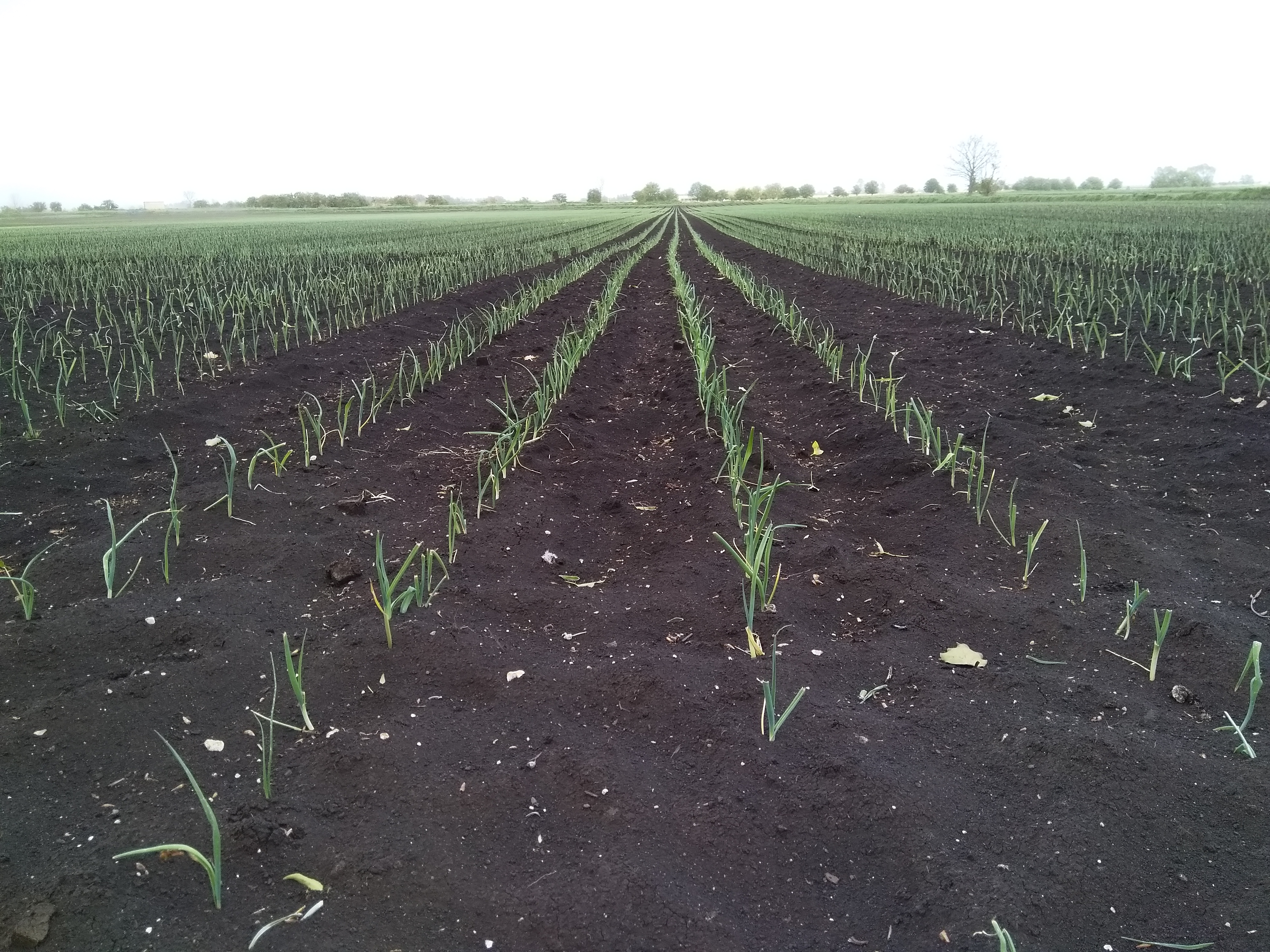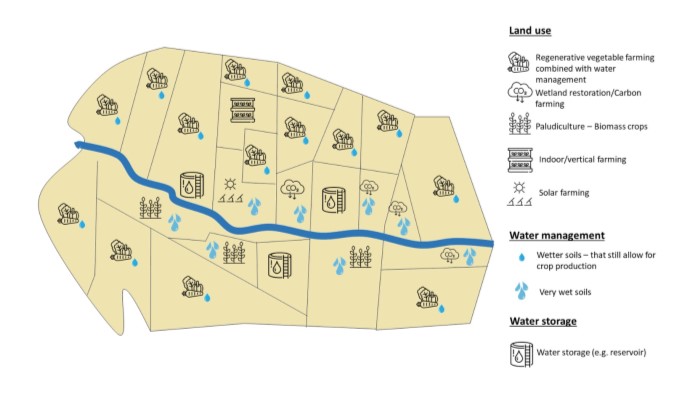- About
-
Research
- Agronomy and farming systems
-
Agricultural crop research
-
Research projects - agriculture
- About SASSA-SAI
- BioBoost
- Biomass Connect
- CTP for Sustainable Agricultural Innovation
- Climate Ready Beans - workshop presentations (March 2022)
- Crop diversity HPC cluster
- Designing Future Wheat
- Final project workshop
- Get involved
- List of materials
- News and updates
- Partners
- Rustwatch
- The Sentinel Crop Disease Surveillance Network
- The research team
- UK Cereal Pathogen Virulence Survey
- UK wheat varieties pedigree
- Weed management - IWM Praise
- Crop breeding
- Crop characterisation
- Data sciences
- Genetics and pre-breeding
- Plant biotechnology
- Plant pathology and entomology
- Resources
-
Research projects - agriculture
-
Horticultural crop research
-
Research projects - horticulture
- Augmented Berry Vision
- BEESPOKE
- Boosting brassica nutrition in smart growing systems
- CTP for Fruit Crop Research
- Develop user-friendly nutrient demand models
- Egg laying deterrents for spotted wing drosophila
- Enhancing the nutritional quality of tomatoes
- Improving berry harvest forecasts and productivity
- Improving vineyard soil health through groundcover management
- Intelligent growing systems
- Knowledge transfer for sustainable water use
- POME: Precision Orchard Management for Environment
- RASCAL
- STOP-SPOT
- UV-Robot
- Crop science and production systems
- Genetics, genomics and breeding
- Pest and pathogen ecology
- Field vegetables and salad crops
- Plum Demonstration Centre
- The WET Centre
- Viticulture and Oenology
-
Research projects - horticulture
- Crop Science Centre
-
Services
- Analytical Services
- Business Development
- Commercial trial services
- Membership
- Plant breeding
- Plant characterisation
- Seed certification
-
Training
-
Technical agronomy training
- Advanced crop management of bulb onions
- Advanced crop management of vegetable brassicas
- Advanced nutrient management for combinable crops
- Benefits of cover crops in arable systems
- Best practice agronomy for cereals and oilseed rape
- Developing a Successful Strategy for Spring Crops
- Disease Management and Control in Cereal Crops
- Incorporating SFI options into your rotation
- Protected Environment Horticulture – Best Practice
- Techniques for better pest management in combinable crops
- Crop inspector and seed certification
- Licensed seed sampling
-
Technical agronomy training
- News & Views
- Events
-
Knowledge Hub
- Alternative and break crops
-
Crop genetics
- POSTER: Diversity enriched wheat (2025)
- POSTER: Genetics of wheat flag leaf size (2024)
- POSTER: Wheat yield stability (2024)
- Poster: Traits for future cereal crops (2022)
- POSTER: wild wheat fragment lines (2022)
- POSTER: Improving phenotyping in crop research (2022)
- PRESENTATION: Plant breeding for regen ag
- Poster: Designing Future Wheat (2020)
- Crop nutrition
-
Crop protection
- POSTER: Understanding the hierarchy of black-grass control (2025)
- POSTER: Emerging weed threats (2025)
- POSTER: Disease control in barley (2025)
- Poster: Weed seed predation in regen-ag (2024)
- POSTER: Disease control in winter wheat (2025)
- POSTER: Mode of action (2023)
- POSTER: Inter-row cultivation for black-grass control (2022)
- POSTER: UKCPVS winter wheat yellow rust in spring 2025 (2025)
- Poster: Management of Italian ryegrass (2021)
- POSTER: UKCPVS winter wheat rusts - 2024/25 review (2025)
- POSTER: UKCPVS disease monitoring and the benefit to UK growers (2025)
- POSTER: Diagnosing and scoring crop disease using AI (2025)
- POSTER: Finding new sources of Septoria resistance (2024)
- POSTER: Fungicide resistance research (2024)
- POSTER: Detecting air-borne pathogens (2024)
- POSTER: Oilseed rape diseases (2024)
- POSTER: Fungicide resistance research (2024)
- POSTER: Improving chocolate spot resistance (2022)
- Poster: Pathogen diagnostics (2022)
- Fruit
- Regen-ag & sustainability
-
Seed certification
- POSTER: Wheat DUS (2024)
- POSTER: Innovation in variety testing (2024)
- POSTER: AI and molecular markers for soft fruit (2024)
- POSTER: Barley crop identification (2023)
- POSTER: Herbage grass crop identification (2023)
- POSTER: Herbage legume crop identification (2024)
- POSTER: Minor cereal crop inspecting (2023)
- POSTER: Pulse crop identification (2023)
- POSTER: Wheat crop identification (2023)
-
Soils and farming systems
- POSTER: Checking soil health - across space and time (2024)
- POSTER: Checking soil health - step by step (2024)
- POSTERS: Changing soil management practices (2022)
- Poster: Monitoring natural enemies & pollinators (2021)
- POSTER: Soil structure and organic matter (2024)
- POSTER: Novel wheat genotypes for regen-ag (2024)
- Video: New Farming Systems project (2021)
- Video: Saxmundham Experimental Site (2021)
- POSTER: Impact of prolonged rainfall on soil structure (2024)
- POSTER: Soil & agronomic monitoring study (2024)
- POSTER: The impact of rotations & cultivations (2024)
- VIDEO: Great Soils; soil sampling guidelines (2020)
- Poster: Soil invertebrates within arable rotations (2024)
- VIDEO: Soil health assessment (2021)
- POSTER: Saxmundham - modern P management learnings
- POSTER: Saxmundham - 125 years of phosphorus management
- Poster: Soil phosphorus - availability, uptake and management (2025)
- POSTER: Morley long term experiments (2025)
- POSTER: Exploiting novel wheat genotypes for regen-ag (2025)
- Video: Saxmundham Experimental Site (2021)
- Varieties
It’s a triple challenge for lowland peat

Globally humanity is facing a triple challenge, to deliver food security, maintain/restore biodiversity and mitigate climate change. In this context, drained lowland peat landscapes have come under particular focus. In the first of a series of blog posts, focusing on peatland, NIAB’s Elizabeth Stockdale, Bruce Napier and Jenny Rhymes from UKCEH look at the challenges and opportunities of farming on lowland peat…
Lowland peatlands have formed under a wide range of wet conditions across the UK ranging from low-nutrient, acidic and bog-like through to high nutrient and base-rich.
In the north and west, lowland peatlands often support rain-fed raised bogs, whereas in large estuarine lowlands, such as the East Anglian Fens, Humberhead Levels and Somerset Levels, peats often formed in river and groundwater-fed reed/sedge swamps.
These landscapes formed over thousands of years as marine and estuarine clays and silts were deposited as a result of the advance and retreat of the sea, whilst rivers slowed down as they reach the lowlands, deposited their sediments and created intermingled peaty wetlands and wet woodlands.
Small peatlands also occur throughout England along many river valleys and in wet depressions. A large number of insect, bird and animal species were associated with these diverse intact lowland peatland and wetland habitats.
Large areas of lowland fen now provide the only habitat for many threatened bird species including common crane and the rare spotted crake. As a result of habitat loss, some species are now rare, for example the swallowtail butterfly which feeds on milk parsley and is restricted to the Norfolk Broads (Figure 1).
Figure 1. Swallowtail butterfly on milk parsley

Management of water within England’s lowland peat landscapes happened from their formation thousands of years ago, but extensive drainage schemes largely took place from the 17th century onwards as venture capital was invested in advance, with the ‘Adventurers’ receiving reclaimed land in repayment.
The drainage effort was immense with the construction and maintenance of many large drains to move river water quickly away to sea coupled with windmills to drive pumping stations that moved water from the intervening lowlands up to the drains.
Successful drainage of peat leads to a fall in the land surface as a result of collapse and shrinkage of the peat soil directly as a result of the removal of the water (which occupies over 50% of the peat volume) and then as a result of the compression of lower peat layers because the drier peat layers no longer ‘float’.
As the organic materials within the peat are exposed to air, oxygen-fuelled decomposition processes begin. Loss of peat soil is well documented with the land surface of The Fens, where it is now considered to be ca. 10 m below where it was before drainage began; in many lowland peat landscapes, estimates of peat loss in lowland peatland used for agriculture are commonly 0.5 to 2 cm per year.
In addition to decomposition, wind erosion is also responsible for losses, up to 0.25 cm peat per year, particularly during wind blow events where dry surface peat is blown off the fields.
Figure 2. Peat soils are used intensively to grow vegetables to meet UK market demand

Falling land surfaces mean that over the centuries, the pumps have needed to get bigger and consequently the main drains stand further and further above the surrounding land.
Lowland peat soils were drained to provide increased opportunity for farming. Today, grasslands are common in the Somerset Levels supporting dairy production, whilst in the Lancashire Mosses, Humberhead Levels and Fens, arable and horticultural systems dominate. These systems are often locally adapted to the black soils and are highly productive, for example The Fens account for around half of the most productive (termed Grade 1) agricultural land in England.
Hence, although it covers less than 4% of England’s farmed area, The Fens produces more than 7% of England’s total agricultural production with a significant concentration of vegetable and salad production; overall more than 40% of England’s fresh vegetables are grown on lowland peat soils. The main vegetable crops associated with lowland peat soils are celery, lettuce, brassicas, leeks and potatoes.
Greenhouse gas (GHG) emissions associated with drained peatlands are high and have a high intensity (Figure 2). These emissions largely result from the decomposition of the organic soils releasing the stored carbon as carbon dioxide (CO2) to the atmosphere. About 3% of the total GHG emissions from all sources in England are from lowland peatlands drained for agriculture. There are also significant methane losses from ditches and drains in these landscapes, but they are not yet well quantified.
Detailed research work led by Professor Chris Evans, at the UK Centre for Ecology and Hydrology (UKCEH), has confirmed that it is the depth of aerated peat that is the dominant control on GHG emissions from managed peatlands. This work has shown that manipulating water table depths to near surface levels (0 to 20 cm below the surface) offers the optimal carbon derived GHG mitigation in lowland peat.
Within this range it is likely that CO2 emissions will be reduced to zero and, if peat-forming vegetation is present, the system will become a carbon sink. Other GHG emissions are also likely to be close to zero provided the field does not become continuously flooded.
| % of global calories | % of global GHG | Emissions intensity (tonnes CO2e per M kCal) |
|
|---|---|---|---|
| Overall for crop production | 0.16 | ||
| Dryland cropping systems | 84 | 20 | 0.03 |
| Paddy rice | 15 | 48 | 0.58 |
| Cropping systems on drained peatland | 1.1 | 32 | 3.70 |
There is a common perception that re-wetted lowland peatlands can only be managed for conservation, however there are a growing number of options to manage re-wetted land commercially, e.g. paludiculture and carbon farming.
Significant reductions in GHG emissions reductions can therefore be achieved if the water table can be maintained through changes in agricultural water management and crops grown, even if land remains in crop production. Opportunities for wetter cropping could include plants used for bioenergy and/or construction material.
Recent research is also including food crops such as celery and watercress. To tackle these issues it requires a combined, landscape-scale approach that is likely to have a mosaic of continued highvalue cropping systems under wetter conditions (arable and vegetable crops) integrated with alternative wetter land use opportunities, e.g. carbon farming, together with an integrated system of water management (Figure 4).
These landscape-scale changes may help to deliver national net-zero carbon emission targets and enhance biodiversity within the lowland peat landscape; however, they are very unlikely to maintain the current level of crop production. Therefore there will be a need to increase crop production elsewhere to maintain current levels of food security. In particular delivering the triple challenge would require some expansion of vegetable production elsewhere, on mineral soils or in glasshouse/vertical farming systems.
Figure 4. An example of a new landscape mosaic in a rewetted lowland peat landscape; there is increased water storage (e.g. farm reservoirs) and a wider range of land-uses and habitats (Source: WWF).

Moving cereals currently grown on organic soils to mineral soils could also free up land for re-wetting, helping to offset continued emissions from vegetable production on organic soils. It could also permit movement of vegetable production from high-emitting deep peats to lower-emitting wasted peats, or permit vegetable production to occur over larger areas but at a lower intensity, e.g. with dynamic water level management or with vegetables being grown in rotation with crops that require less drainage.
It is also important to note that for retailers and processors maintaining sufficient crop production of the right quality (with the specification varying by market) is often more important than maintaining overall productivity.
Land suitability, availability and cost, will be major factors determining the potential to relocate vegetable production systems. Relocation of vegetable crops from lowland peat soils to new locations on mineral soils is most likely to be met by expansion of the rented land base used by specialist growers (with the specialist machinery and expertise needed) who would then drop into arable rotations managed by others.
Whilst it is accepted that there is a finite availability of quality land with the infrastructure required for growing vegetables, this land base cannot be identified and quantified easily.
Though horticultural crops are grown throughout the UK, commercial production for major supply chains of each vegetable crop type is often heavily concentrated in regional pockets. This has allowed efficient and centralised marketing, together with optimisation of logistics to reduce losses during transport and processing. Increased production costs and logistics challenges are the major barriers to the relocation of some vegetable crops away from lowland peat soils.
The Climate Change Committee’s Land Use Policies for a Net Zero UK report developed a scenario involving full restoration of at least 50% of upland and 25% of lowland peat by 2050, as part of an overall land-use strategy to achieve net zero.
Similarly, the CCC’s ‘Balanced Net Zero’ scenario for agriculture and land use in the UK’s Sixth Carbon Budget went further, suggesting rewetting or implementing sustainable management on 75% of lowland peat cropland and rewetting 50% of lowland peat grassland by 2050.
Despite the high level of ambition set out in the Sixth Carbon Budget, restoring 50% of cultivated lowland peatland could have major implications for rural economies and the UK’s food supply, with a risk that the environmental costs of food production, including greenhouse gas emissions, are simply transferred overseas.
On the other hand, a strategic combination of restoration, technological innovation and the reconfiguring of production systems in locally-adapted land use mosaics could achieve a combination of food security, biodiversity and climate change mitigation benefits.
What's next?
The Future of Vegetable Production on Lowland Peat is a new, independent study by the UKCEH and NIAB, commissioned through the WWF and Tesco partnership. It exposes the risks of continuing to drain the UK’s limited areas of lowland peat for intensive cultivation, which releases huge quantities of carbon dioxide to the atmosphere while depleting soils and landscapes that are essential to UK food security.
This article originally appeared in the Autumn 2023 edition of NIAB’s Landmark magazine. Landmark features in-depth technical articles on all aspects of NIAB crop research, comment and advice. You can sign up for free and get Landmark delivered to your door or inbox:





